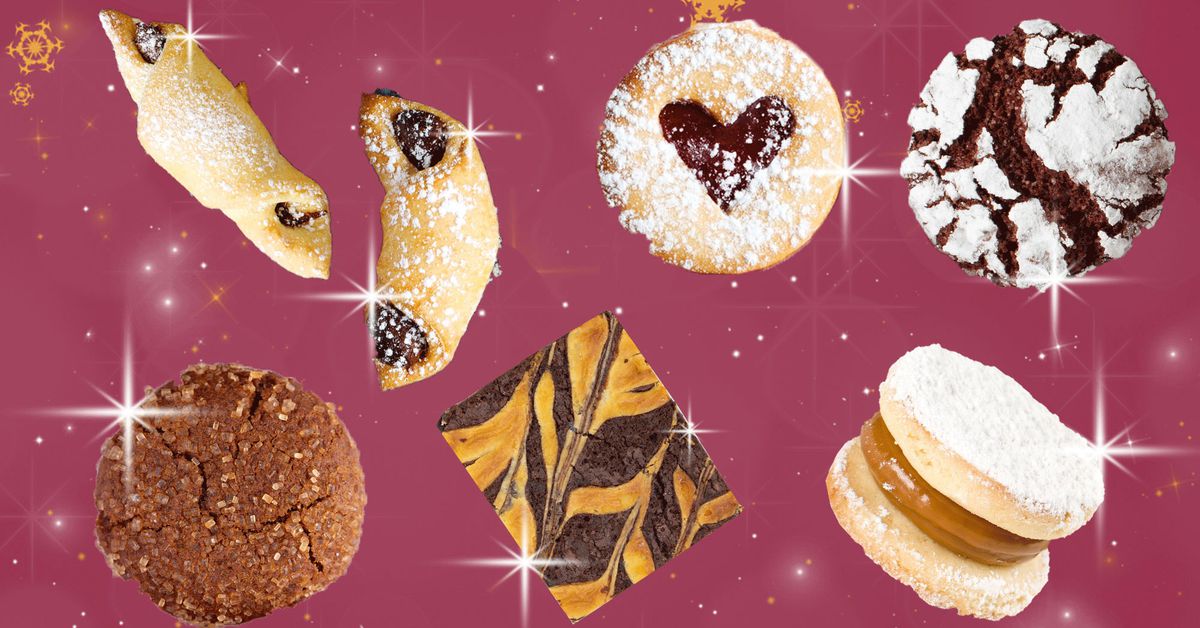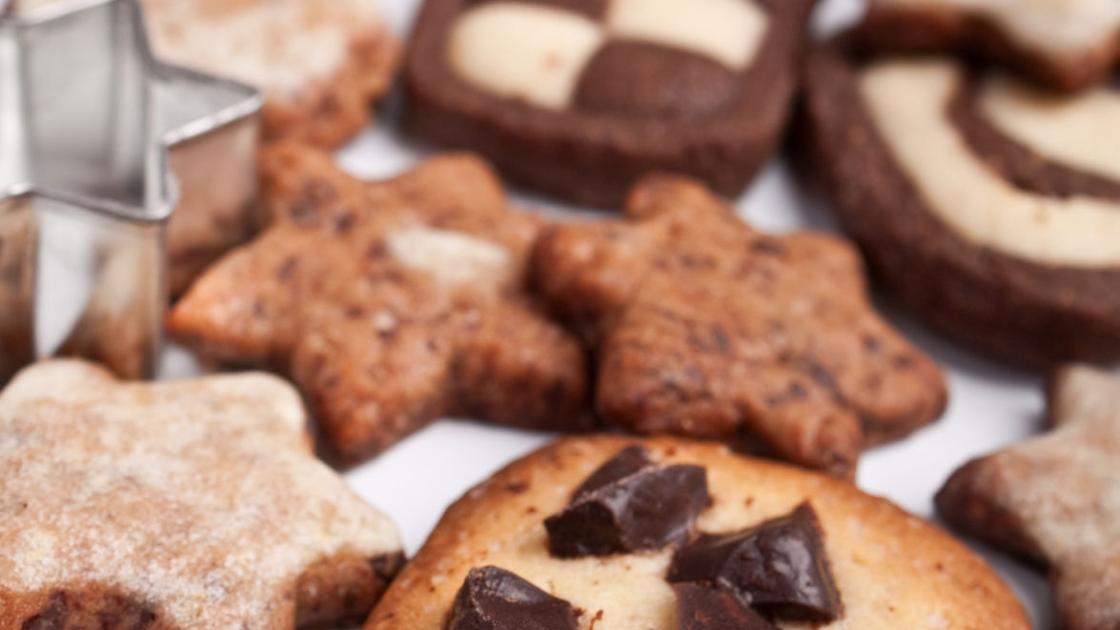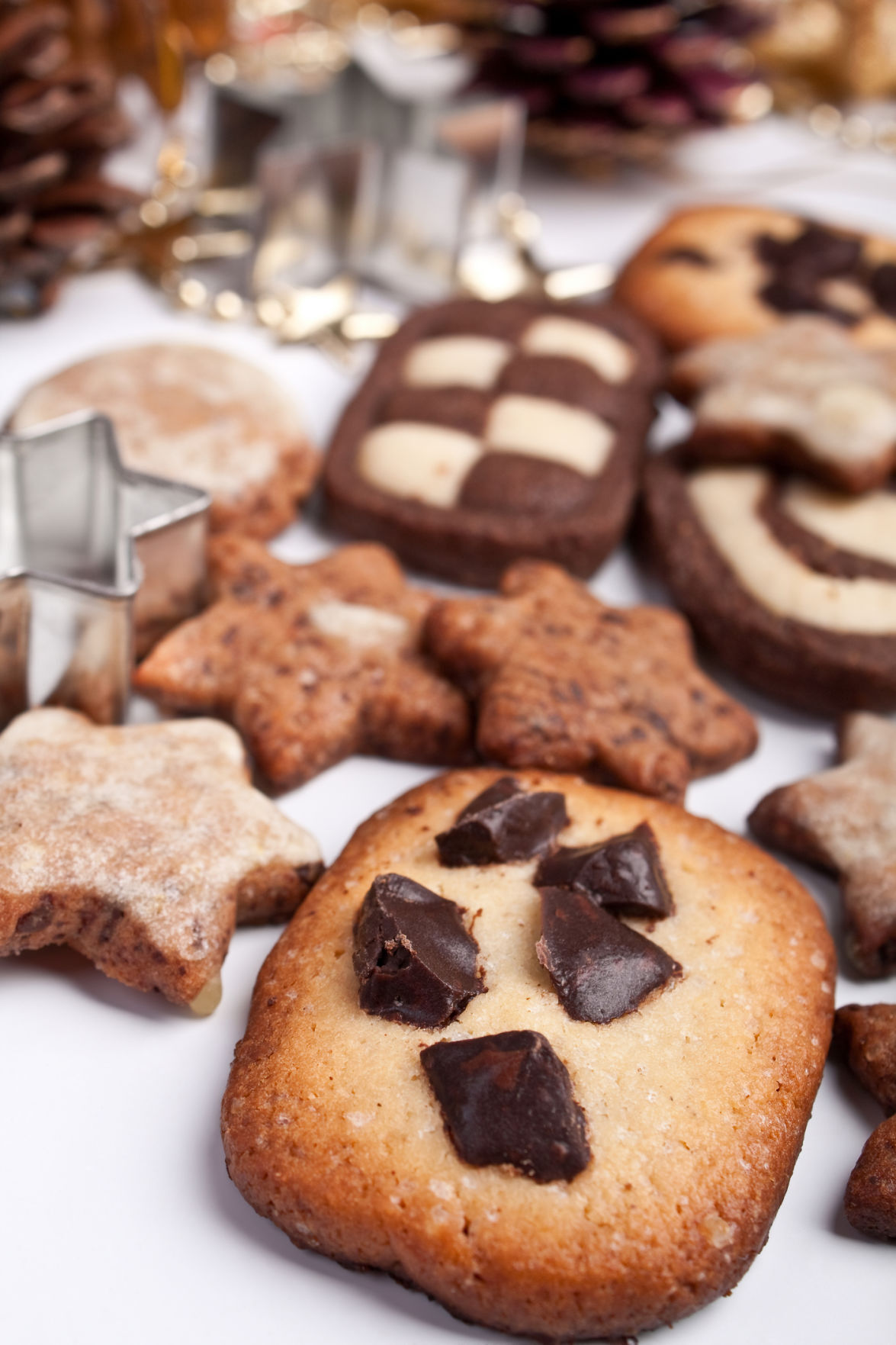cookies.indah.link
It’s cookie season, and it couldn’t have come soon enough. After the contortions of modified and shrunk-down Thanksgivings, it’s exciting to bake something meant for sharing. This year is an especially good one to double that batch and send cookies to family and friends.
Eater conducted a cookie exchange experiment in which 12 editors sent all different types of holiday-ish cookies through the mail to see what survived best. The TL;DR is that no one type of cookie performed better than another — the key is to keep the cookies packed tight and well padded. Below, the Eater editors and writers who participated share why they chose the cookie recipes they did. Even if you’re not normally a baker, many of these recipes are simple enough to pull off. As executive editor Matt Buchanan says, “What I’ve learned from this serendipitous experience is that baking cookies is incredibly easy, even without an electrical mixing apparatus of any kind, so anyone can do it, and that I never will again.”
Chocolate crinkle cookies: My husband is dairy-free, which tends to limit the cookies we’re able to make: Often, all-vegan recipes will require ingredients I don’t have on hand (I’m lookin’ at you, applesauce) and adapted-to-dairy-free recipes usually fail to work out for me (enter a tragic, time-consuming batch of snickerdoodles that came out hard as rocks). But these crinkles have become a go-to because they’re naturally dairy-free, don’t require a mixer for the dough, and the beautiful crinkling on top looks impressive despite being easy to create. Admittedly, I knew going in that the powdered sugar topping would likely take a beating in the mail — and it definitely did, losing a lot of the crinkle effect — but this is the one cookie recipe I will commit to time and time again. —Erin DeJesus
Tartine All Day brownies and Edd Kimber’s tahini chocolate chip bars: I chose these because of the relative indestructibility of brownies and blondies; they’re sturdy enough to stand up to the slings and arrows of the U.S. postal system, and also tend to stay fresh for quite some time. I chose Liz Prueitt’s brownie recipe from Tartine All Day because a) they’re always a hit and b) they’re gluten-free (they use sorghum flour), which means most people will eat them. The tahini blondies are adapted from Edd Kimber’s tahini chocolate chip cookie bar recipe in The Boy Who Bakes; I added an extra egg and more butter to them, as well as malt powder and white chocolate chips. Maybe it’s the malt and the extra fat, but the result is very tender and enjoyably squidgy. —Rebecca Flint Marx
Peanut butter swirled brownies: One of the funniest things to me is when people A. write subjective opinions as objective truths (e.g., “[X Food] Is Bad and if You Like It, You’re Wrong”) and B. when people get mad about subjective opinions as if one person’s dislike of a favorite food someone how negates the other person’s right to like it. So color me surprised when I found myself taking this Mel blog about how chocolate and peanut butter are a bad combination, like, way too personally (I chalk my overreaction up to election stress, okay???). Anyway, the Mel hot take made me really double down on the marriage between chocolate and peanut butter, what with it being a SACRED institution and all. I also just really love these perfect moist-yet-sturdy Smitten Kitchen brownies (as I love all Deb Perelman’s baked goods) and had all the ingredients already in my home. Chocolate and peanut butter — the only food combination that is actually objectively good. —Madeleine Davies
Chewy molasses cookies: I love a slightly spicy cookie that’s not too sweet, and molasses cookies are the epitome of that balance for me. I like that they have a tendency to crack on the outside and stay soft on the inside, and they’re great for dunking in coffee with breakfast. They’re also, incidentally, very easy to make and hard to mess up. I used a straightforward chewy molasses cookie recipe from Bon Appétit circa 2013. The coarse sugar on the outside gives the cookies a nice finished appearance and acts as a bit of a protective barrier during shipping. —Brenna Houck
Rose pistachio shortbread cookies from Sister Pie: For my crispy cookie, I wanted to try out a recipe from Detroit’s Sister Pie. I’ve always liked the appearance of the shop’s rose pistachio shortbread cookies, but as I flipped through Lisa Ludwinski’s cookbook I came across the buttered rum shortbread; it felt a little more festive for the holidays, with the same pretty rose frosting on top. Unlike the molasses cookies, these are a little bit more involved, but still simple for a novice baker. To start, you prep the dough, which includes a splash of rum (I used Two James Distillery’s Doctor Bird Jamaica rum). After the dough comes together, you wrap it up and let it sit in the fridge and then slice and bake the cookies as you would a premade dough from the grocery store. The frosting, which also includes booze, came together well and set up nicely. I let the cookies sit overnight for the frosting to completely cure before shipping them out. —Brenna Houck
Miso peanut butter cookies: I’m a big fan of miso-spiked sweets, especially when combined with something nutty, as with these miso peanut butter cookies from Krysten Chambrot at the New York Times. They’re sweet and salty, chewy at the center and crisp at the edges. That is to say, they’re perfect. The recipe calls for sweeter white miso, but I opted for red miso because I like the more assertive flavor. I even tried scaling down the sugar in the first batch to highlight that savory edge, but it affected the composition too much, turning the cookies into tall, crumbly biscuits (not bad, but not decadent holiday cookie material). After I returned the sugar to the proper proportion, they came out great. On round two, I did underbake them by three minutes (two minutes before removing the pan the first time, and one minute on the second pass in the oven) to account for my oven, ensure they would arrive chewy after a cross-country journey, and optimize structural integrity — yielding something like a Mrs. Fields cookie, but fancy. —Nick Mancall-Bitel
Smitten Kitchen blondies: When I was in high school, my mom started making blondies for every sleepover, every late-night play rehearsal, and every study session. They probably stuck around because there’s nothing wrong with a thick square of chocolate chip cookie, and because as much as I love cookies, measuring out dough or (gasp) cutting out shapes is too tedious. A few years ago my mom switched from the recipe on the back of a Hershey’s chip bag to this one from Smitten Kitchen, which has far fewer ingredients and really ups the gooey, fudgy factor. I thought the density would make them ship well, but I may have underbaked them a little, and I ruined a few trying to extract them from the pan. Still, once they cooled, they cut cleanly into bite-sized blocks perfect for nibbling. —Jaya Saxena
Walnut alfajores from Flavor Flours: I went with a familiar cookie recipe for our inaugural cookie swap, because the thought of shipping cookies was nerve-wracking enough and I didn’t need to add more variables to the mix. I followed a recipe for walnut alfajores, from queen of baking Alice Medrich’s gluten-free cookbook Flavor Flours. The book has introduced me to so many excellent desserts made with nonwheat flours and grains, but this recipe is a particular favorite. The cookies are crisp with just a tiny bit of chew (which I hoped would make them sturdy enough to ship), and I filled each sandwich with store-bought cajeta, though it’s easy enough to make from scratch. The cookies didn’t come out perfectly round, which made for a few wonky sandwiches, with caramel spilling out from the sides. That could’ve made for messy transit, but I individually wrapped each cookie before packing them all up. Luckily, the box I packed the cookies in was a couple inches too small, and I had no choice but to eat an extra alfajor... or two. —Elazar Sontag
Sugar cookies: I went with a very straightforward sugar cookie for two main reasons: 1. You get to decorate them and 2. They are uniform and thus easier to pack and ship. The Susan Spungen recipe is dead simple and easy to roll and cut out (I used jam jar covers for a consistent shape) and can be the base for infinite decorating strategies. At first I was tempted to make a whole batch of tie-dye cookies, following this Bon Appétit technique, but I quickly realized it’s incredibly tedious and I’m especially lazy. Instead, I went with two solid colors and played with some swirls at the end. —Amanda Kludt
Peanut butter miso cookies, Round Two: I’ve never baked cookies, even out of a can or a tube or whatever ready-to-bake cookie dough is packed into these days — has anyone disrupted cookies yet? — and anything that comes out of my kitchen is nearly exclusively by way of the NYT Cooking app (though shoutout to Just One Cookbook) because, despite its half-broken search, it is still the least annoying way for a lazy (or is it burned out?) person to acquire and successfully transubstantiate a list of ingredients and instructions into something edible without having to put down their phone. So there was only one possible outcome if I successfully forced myself to bake cookies: the New York Times peanut butter-miso cookies.
But I find cookies that don’t have chunks in them crushingly boring, even ones loaded with miso, so I threw in a heap of white chocolate — admittedly risky for a virgin cookie expedition — and hoped it would work out. What I’ve learned from this serendipitous experience is that baking cookies is incredibly easy, even without an electrical mixing apparatus of any kind, so anyone can do it, and that I never will again. —Matt Buchanan
Maple shortbread sandwich cookies: Sandwich cookies are the sneakiest move. Really, you’re eating two entire cookies masquerading as one, with a bonus layer of sugary cream in the middle. I ultimately landed on this recipe because A. I love maple (everything tastes like pancakes!) and B. King Arthur Flour recipes are known to be well tested and always feature gram measurements as well as cups. Using a scale means you can just dump stuff in a bowl straight from the container, which is great for lazy cooks and reluctant dishwashers like me. The clincher with these cookies, though, is the Nordic cookie stamps that I’d been eyeing for a while and finally purchased, which are a good way to make cookies feel fancy without frosting them. (I. Loathe. Frosting. Cookies. I’m terrible at piping, and the icing is always too thick or too runny, and way too fragile for shipping.) These cookie stamps took a little getting used to, but once I figured out the sturdy and rather satisfying thwack needed to pop the cookies out, it was a cinch.
Note: I doubled the recipe as suggested for stamping, but in the end it still only made 13 cookies. I’d quadruple the recipe if you want to make more than just a batch, or skip the sandwiching altogether, which made for some pretty burly cookies. That is in no way a problem for me, but daintier tastes could get away with one at a time. —Lesley Suter
Mexican wedding cookies: Along with sugar cookies shaped like reindeer and snowmen, I grew up making Russian tea cakes, aka Mexican wedding cookies, around the holidays (although back then I just called them snowballs). So for this project, because I was not in an ambitious mood and do not own any cookie cutters, Christmas-themed or otherwise, I opted for a Bon Appétit recipe for Mexican wedding cookies that I’ve made before. The brown butter in this recipe makes the classic cookie feel a little bit more special than the ones I baked as a kid, but they’re thankfully still incredibly easy to make — and, I was happy to learn, they ship okay too, even if they ended up looking less like snowballs when they reached their final destination. —Monica Burton
Photo credits: Cookies from Tomalu, LindasPhotography, Anjelika Gretskaia, Alinakho, James Andrews, and AnjelaGr/Getty Images
The Link Lonk
December 01, 2020 at 01:21AM
https://ift.tt/3qgZrDt
The Best Holiday Cookie Recipes for Cookie Swaps - Eater
https://ift.tt/2CmfU4u
Cookies







:no_upscale()/cdn.vox-cdn.com/uploads/chorus_asset/file/22119386/cookies_01602.jpg)
:no_upscale()/cdn.vox-cdn.com/uploads/chorus_asset/file/22119388/cookies_01610.jpg)
:no_upscale()/cdn.vox-cdn.com/uploads/chorus_asset/file/22121647/sugar_cookies2.jpg)
:no_upscale()/cdn.vox-cdn.com/uploads/chorus_asset/file/22119409/cookies_01527.jpg)
:no_upscale()/cdn.vox-cdn.com/uploads/chorus_asset/file/22119412/cookies_01590.jpg)
:no_upscale()/cdn.vox-cdn.com/uploads/chorus_asset/file/22119419/cookies_01490.jpg)
:no_upscale()/cdn.vox-cdn.com/uploads/chorus_asset/file/22119423/cookies_01542.jpg)
:no_upscale()/cdn.vox-cdn.com/uploads/chorus_asset/file/22121649/sandwich_2.jpg)